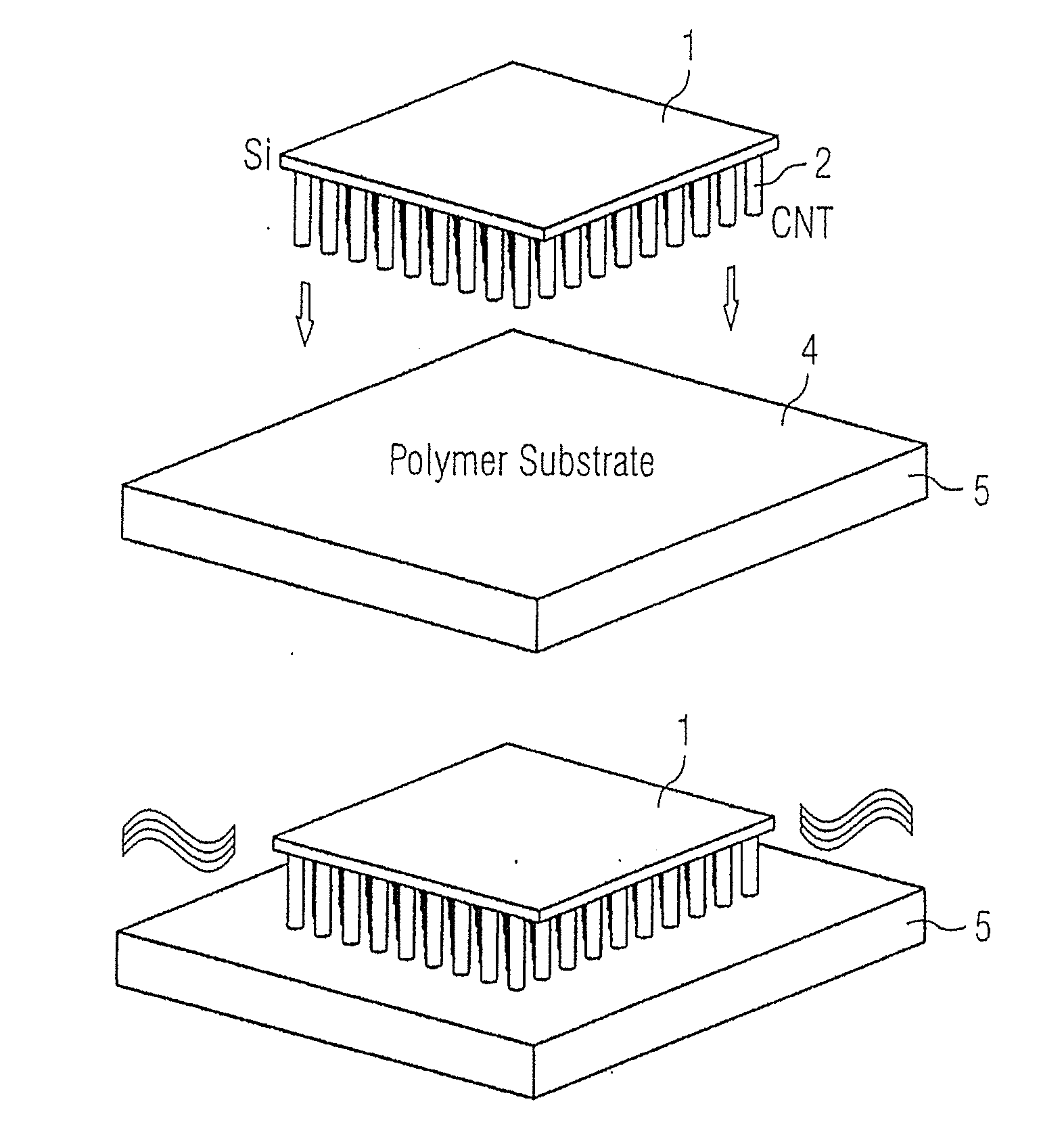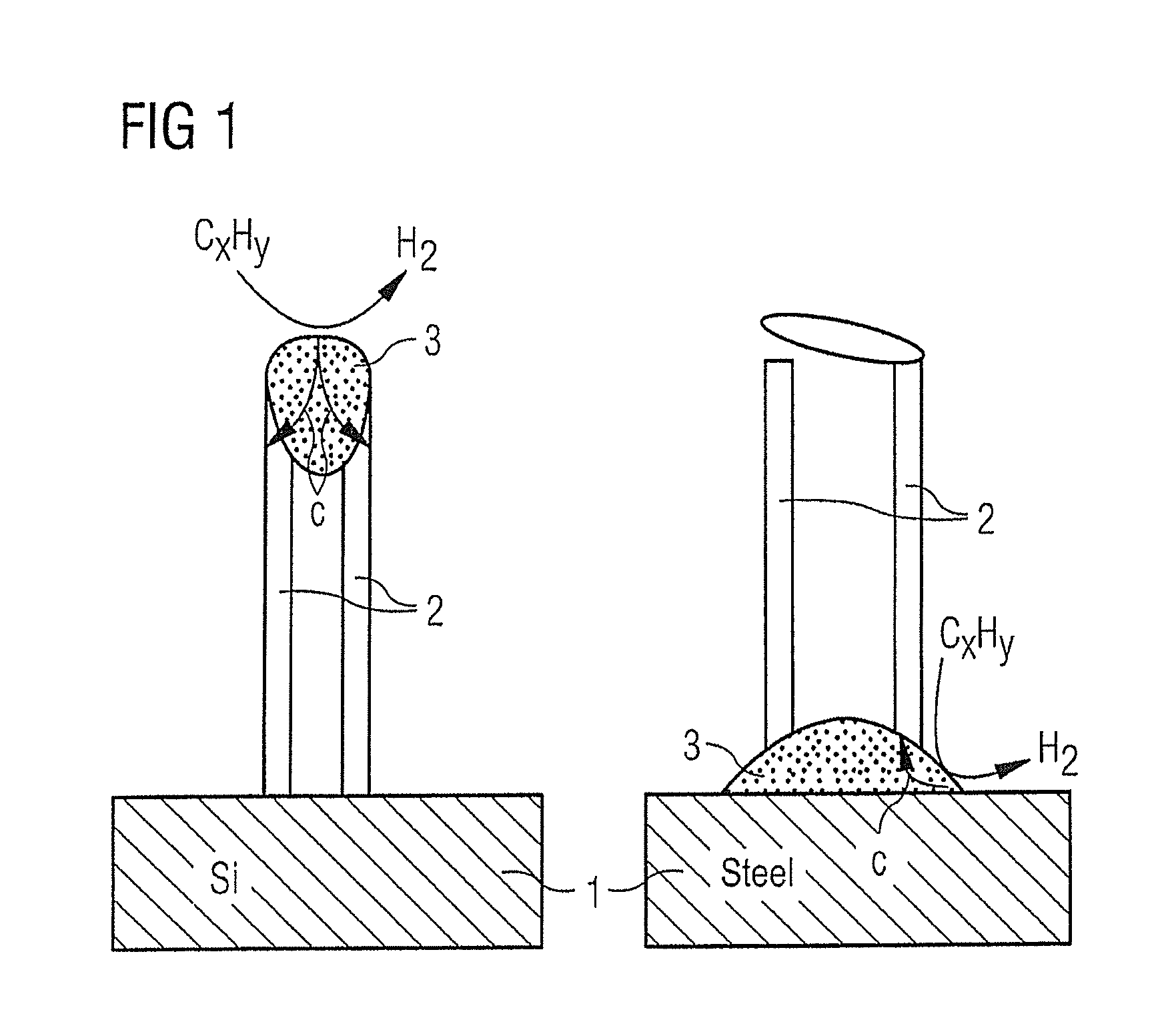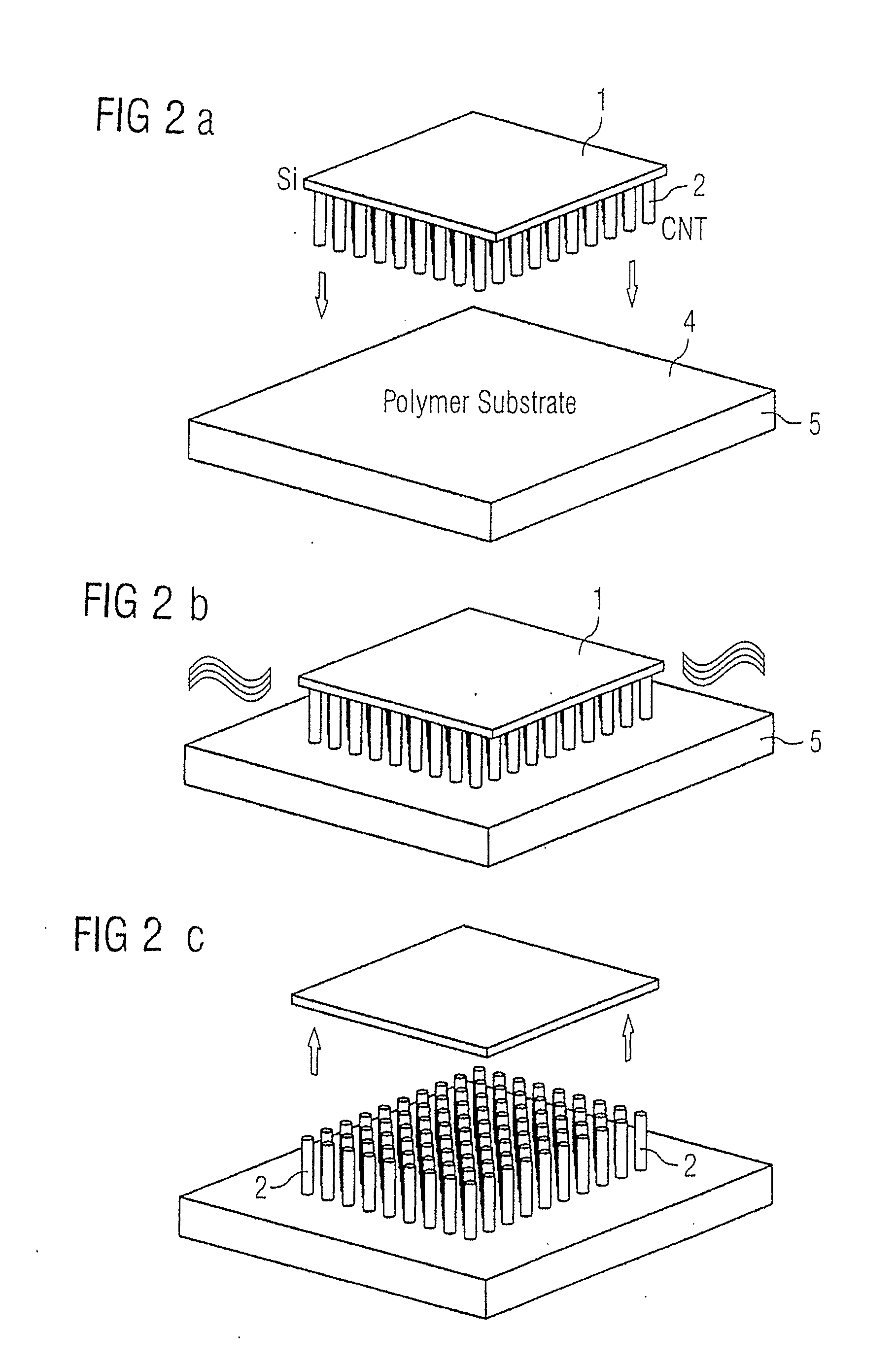Substrate with carbon nanotubes, and method to transfer carbon nanotubes
a carbon nanotube and substrate technology, applied in the field of substrate, can solve the problems of low current and low mechanical stability of field emitters, and achieve the effect of long-term durability and higher currents of field electron emitters
- Summary
- Abstract
- Description
- Claims
- Application Information
AI Technical Summary
Benefits of technology
Problems solved by technology
Method used
Image
Examples
Embodiment Construction
[0017]For example, the aligned CNTs are produced as follows:
a)
[0018]The oven is heated to a deposition temperature of approximately 775° C. To grow the aligned CNTs, a saturated ferrocene solution is injected into xylol. Due to the iron in the ferrocene as a catalyst particle, the CNTs can grow on the metallic surface, either in a tip growth mode (thus with the incorporation of the catalytic iron particle) or in a base growth mode (thus while leaving the catalytic iron particle behind on the substrate surface). In which mode the CNTs ultimately grow depends on the interaction of the substrate surface with the catalyst particle.
[0019]The CNT growth is determined by the interaction between the catalyst particle and the substrate. Weak bonds between the catalyst and the substrate lead to tip growth mode, strong bonds lead to the base growth mode.
[0020]The preferred length of the CNTs is thereby between 2 to 10 and 50 μm.
[0021]All types of metals can be used as electrically conductive s...
PUM
| Property | Measurement | Unit |
|---|---|---|
| tube diameter | aaaaa | aaaaa |
| temperature | aaaaa | aaaaa |
| length | aaaaa | aaaaa |
Abstract
Description
Claims
Application Information
 Login to View More
Login to View More - R&D
- Intellectual Property
- Life Sciences
- Materials
- Tech Scout
- Unparalleled Data Quality
- Higher Quality Content
- 60% Fewer Hallucinations
Browse by: Latest US Patents, China's latest patents, Technical Efficacy Thesaurus, Application Domain, Technology Topic, Popular Technical Reports.
© 2025 PatSnap. All rights reserved.Legal|Privacy policy|Modern Slavery Act Transparency Statement|Sitemap|About US| Contact US: help@patsnap.com



